Copyright
Table of Contents
Preface
Section 1. New for the Second Edition
Section 2. Conventions Used in This Book
Section 3. Using Code Examples
Section 4. O’Reilly Safari
Section 5. How to Contact Us
Section 6. Acknowledgments
In Memoriam: John D. Hunter (1968–2012)
Acknowledgments for the Second Edition (2017)
Acknowledgments for the First Edition (2012)
Chapter 1. Preliminaries
1.1 What Is This Book About?
What Kinds of Data?
1.2 Why Python for Data Analysis?
Python as Glue
Solving the “Two-Language” Problem
Why Not Python?
1.3 Essential Python Libraries
NumPy
pandas
matplotlib
IPython and Jupyter
SciPy
scikit-learn
statsmodels
1.4 Installation and Setup
Windows
Apple (OS X, macOS)
GNU/Linux
Installing or Updating Python Packages
Python 2 and Python 3
Integrated Development Environments (IDEs) and Text
Editors
1.5 Community and Conferences
1.6 Navigating This Book
Code Examples
Data for Examples
Import Conventions
Jargon
Chapter 2. Python Language Basics, IPython, and Jupyter Notebooks
2.1 The Python Interpreter
2.2 IPython Basics
Running the IPython Shell
Running the Jupyter Notebook
Tab Completion
Introspection
The %run Command
Executing Code from the Clipboard
Terminal Keyboard Shortcuts
About Magic Commands
Matplotlib Integration
2.3 Python Language Basics
Language Semantics
Scalar Types
Control Flow
Chapter 3. Built-in Data Structures, Functions, and Files
3.1 Data Structures and Sequences
Tuple
List
Built-in Sequence Functions
dict
set
List, Set, and Dict Comprehensions
3.2 Functions
Namespaces, Scope, and Local Functions
Returning Multiple Values
Functions Are Objects
Anonymous (Lambda) Functions
Currying: Partial Argument Application
Generators
Errors and Exception Handling
3.3 Files and the Operating System
Bytes and Unicode with Files
3.4 Conclusion
Chapter 4. NumPy Basics: Arrays and Vectorized
Computation
4.1 The NumPy ndarray: A Multidimensional Array Object
Creating ndarrays
Data Types for ndarrays
Arithmetic with NumPy Arrays
Basic Indexing and Slicing
Boolean Indexing
Fancy Indexing
Transposing Arrays and Swapping Axes
4.2 Universal Functions: Fast Element-Wise Array Functions
4.3 Array-Oriented Programming with Arrays
Expressing Conditional Logic as Array Operations
Mathematical and Statistical Methods
Methods for Boolean Arrays
Sorting
Unique and Other Set Logic
4.4 File Input and Output with Arrays
4.5 Linear Algebra
4.6 Pseudorandom Number Generation
4.7 Example: Random Walks
Simulating Many Random Walks at Once
4.8 Conclusion
Chapter 5. Getting Started with pandas
5.1 Introduction to pandas Data Structures
Series
DataFrame
Index Objects
5.2 Essential Functionality
Reindexing
Dropping Entries from an Axis
Indexing, Selection, and Filtering
Integer Indexes
Arithmetic and Data Alignment
Function Application and Mapping
Sorting and Ranking
Axis Indexes with Duplicate Labels
5.3 Summarizing and Computing Descriptive Statistics
Correlation and Covariance
Unique Values, Value Counts, and Membership
5.4 Conclusion
Chapter 6. Data Loading, Storage, and File
Formats
6.1 Reading and Writing Data in Text Format
Reading Text Files in Pieces
Writing Data to Text Format
Working with Delimited Formats
JSON Data
XML and HTML: Web Scraping
6.2 Binary Data Formats
Using HDF5 Format
Reading Microsoft Excel Files
6.3 Interacting with Web APIs
6.4 Interacting with Databases
6.5 Conclusion
Chapter 7. Data Cleaning and Preparation
7.1 Handling Missing Data
Filtering Out Missing Data
Filling In Missing Data
7.2 Data Transformation
Removing Duplicates
Transforming Data Using a Function or Mapping
Replacing Values
Renaming Axis Indexes
Discretization and Binning
Detecting and Filtering Outliers
Permutation and Random Sampling
Computing Indicator/Dummy Variables
7.3 String Manipulation
String Object Methods
Regular Expressions
Vectorized String Functions in pandas
7.4 Conclusion
Chapter 8. Data Wrangling: Join, Combine, and Reshape
8.1 Hierarchical Indexing
Reordering and Sorting Levels
Summary Statistics by Level
Indexing with a DataFrame’s columns
8.2 Combining and Merging Datasets
Database-Style DataFrame Joins
Merging on Index
Concatenating Along an Axis
Combining Data with Overlap
8.3 Reshaping and Pivoting
Reshaping with Hierarchical Indexing
Pivoting “Long” to “Wide” Format
Pivoting “Wide” to “Long” Format
8.4 Conclusion
Chapter 9. Plotting and Visualization
9.1 A Brief matplotlib API Primer
Figures and Subplots
Colors, Markers, and Line Styles
Ticks, Labels, and Legends
Annotations and Drawing on a Subplot
Saving Plots to File
matplotlib Configuration
9.2 Plotting with pandas and seaborn
Line Plots
Bar Plots
Histograms and Density Plots
Scatter or Point Plots
Facet Grids and Categorical Data
9.3 Other Python Visualization Tools
9.4 Conclusion
Chapter 10. Data Aggregation and Group
Operations
10.1 GroupBy Mechanics
Iterating Over Groups
Selecting a Column or Subset of Columns
Grouping with Dicts and Series
Grouping with Functions
Grouping by Index Levels
10.2 Data Aggregation
Column-Wise and Multiple Function Application
Returning Aggregated Data Without Row Indexes
10.3 Apply: General split-apply-combine
Suppressing the Group Keys
Quantile and Bucket Analysis
Example: Filling Missing Values with Group-Specific
Values
Example: Random Sampling and Permutation
Example: Group Weighted Average and Correlation
Example: Group-Wise Linear Regression
10.4 Pivot Tables and Cross-Tabulation
Cross-Tabulations: Crosstab
10.5 Conclusion
Chapter 11. Time Series
11.1 Date and Time Data Types and Tools
Converting Between String and Datetime
11.2 Time Series Basics
Indexing, Selection, Subsetting
Time Series with Duplicate Indices
11.3 Date Ranges, Frequencies, and Shifting
Generating Date Ranges
Frequencies and Date Offsets
Shifting (Leading and Lagging) Data
11.4 Time Zone Handling
Time Zone Localization and Conversion
Operations with Time Zone−Aware Timestamp Objects
Operations Between Different Time Zones
11.5 Periods and Period Arithmetic
Period Frequency Conversion
Quarterly Period Frequencies
Converting Timestamps to Periods (and Back)
Creating a PeriodIndex from Arrays
11.6 Resampling and Frequency Conversion
Downsampling
Upsampling and Interpolation
Resampling with Periods
11.7 Moving Window Functions
Exponentially Weighted Functions
Binary Moving Window Functions
User-Defined Moving Window Functions
11.8 Conclusion
Chapter 12. Advanced pandas
12.1 Categorical Data
Background and Motivation
Categorical Type in pandas
Computations with Categoricals
Categorical Methods
12.2 Advanced GroupBy Use
Group Transforms and “Unwrapped” GroupBys
Grouped Time Resampling
12.3 Techniques for Method Chaining
The pipe Method
12.4 Conclusion
Chapter 13. Introduction to Modeling Libraries in
Python
13.1 Interfacing Between pandas and Model Code
13.2 Creating Model Descriptions with Patsy
Data Transformations in Patsy Formulas
Categorical Data and Patsy
13.3 Introduction to statsmodels
Estimating Linear Models
Estimating Time Series Processes
13.4 Introduction to scikit-learn
13.5 Continuing Your Education
Chapter 14. Data Analysis Examples
14.1 1.USA.gov Data from Bitly
Counting Time Zones in Pure Python
Counting Time Zones with pandas
14.2 MovieLens 1M Dataset
Measuring Rating Disagreement
14.3 US Baby Names 1880–2010
Analyzing Naming Trends
14.4 USDA Food Database
14.5 2012 Federal Election Commission Database
Donation Statistics by Occupation and Employer
Bucketing Donation Amounts
Donation Statistics by State
14.6 Conclusion
Appendix A. Advanced NumPy
A.1 ndarray Object Internals
NumPy dtype Hierarchy
A.2 Advanced Array Manipulation
Reshaping Arrays
C Versus Fortran Order
Concatenating and Splitting Arrays
Repeating Elements: tile and repeat
Fancy Indexing Equivalents: take and put
A.3 Broadcasting
Broadcasting Over Other Axes
Setting Array Values by Broadcasting
A.4 Advanced ufunc Usage
ufunc Instance Methods
Writing New ufuncs in Python
A.5 Structured and Record Arrays
Nested dtypes and Multidimensional Fields
Why Use Structured Arrays?
A.6 More About Sorting
Indirect Sorts: argsort and lexsort
Alternative Sort Algorithms
Partially Sorting Arrays
numpy.searchsorted: Finding Elements in a Sorted Array
A.7 Writing Fast NumPy Functions with Numba
Creating Custom numpy.ufunc Objects with Numba
A.8 Advanced Array Input and Output
Memory-Mapped Files
HDF5 and Other Array Storage Options
A.9 Performance Tips
The Importance of Contiguous Memory
Appendix B. More on the IPython System
B.1 Using the Command History
Searching and Reusing the Command History
Input and Output Variables
B.2 Interacting with the Operating System
Shell Commands and Aliases
Directory Bookmark System
B.3 Software Development Tools
Interactive Debugger
Timing Code: %time and %timeit
Basic Profiling: %prun and %run -p
Profiling a Function Line by Line
B.4 Tips for Productive Code Development Using IPython
Reloading Module Dependencies
Code Design Tips
B.5 Advanced IPython Features
Making Your Own Classes IPython-Friendly
Profiles and Configuration
B.6 Conclusion
Index
About the Author
Colophon
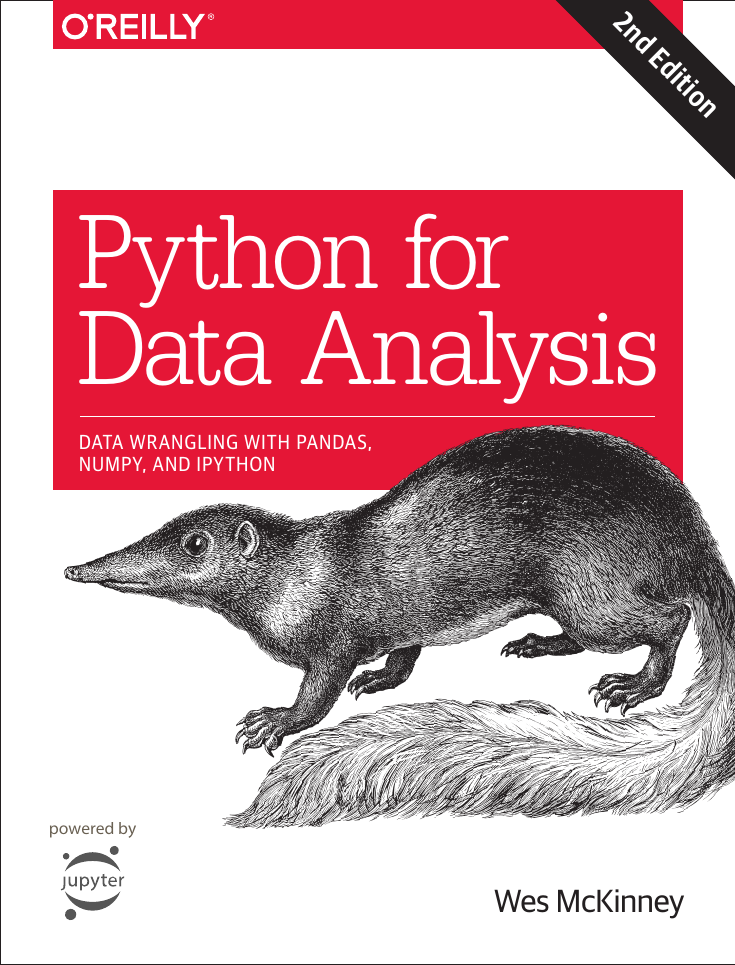
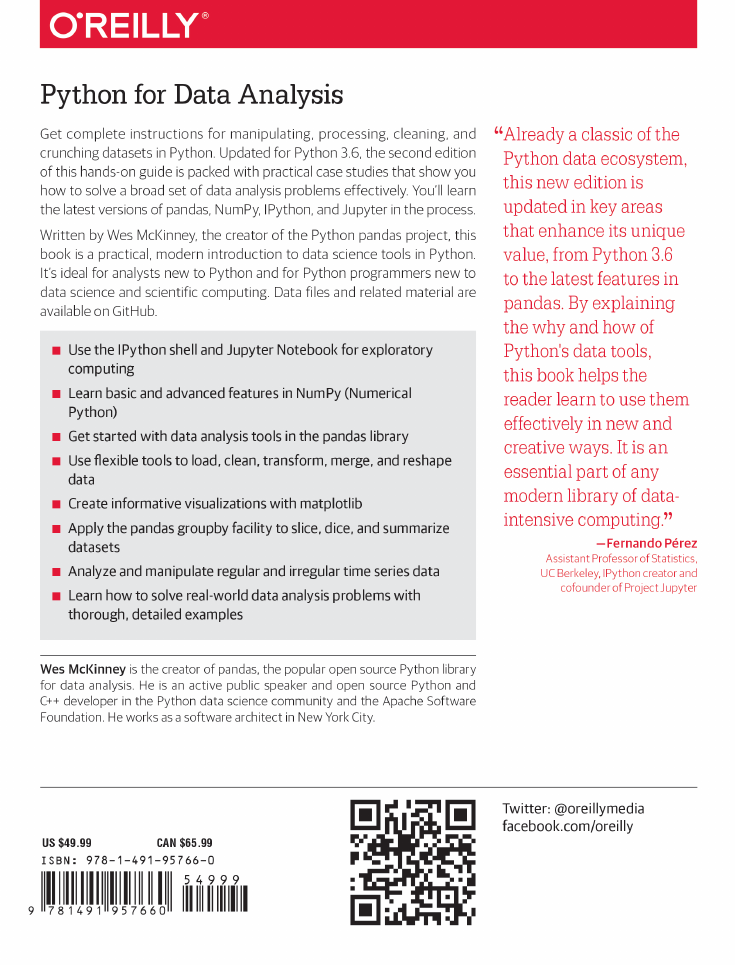
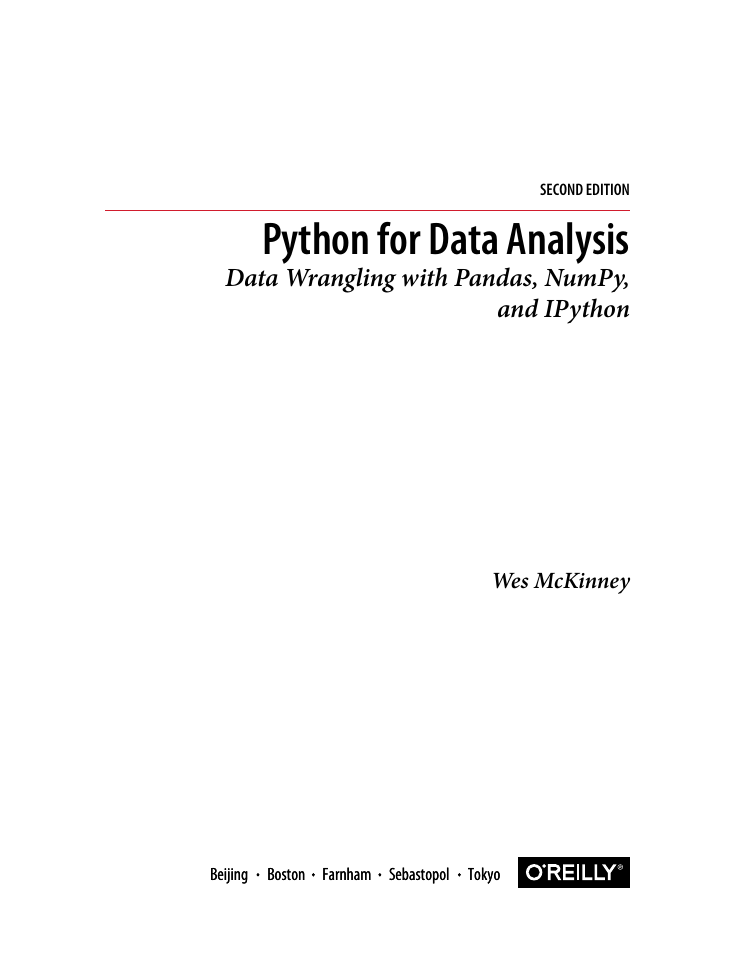
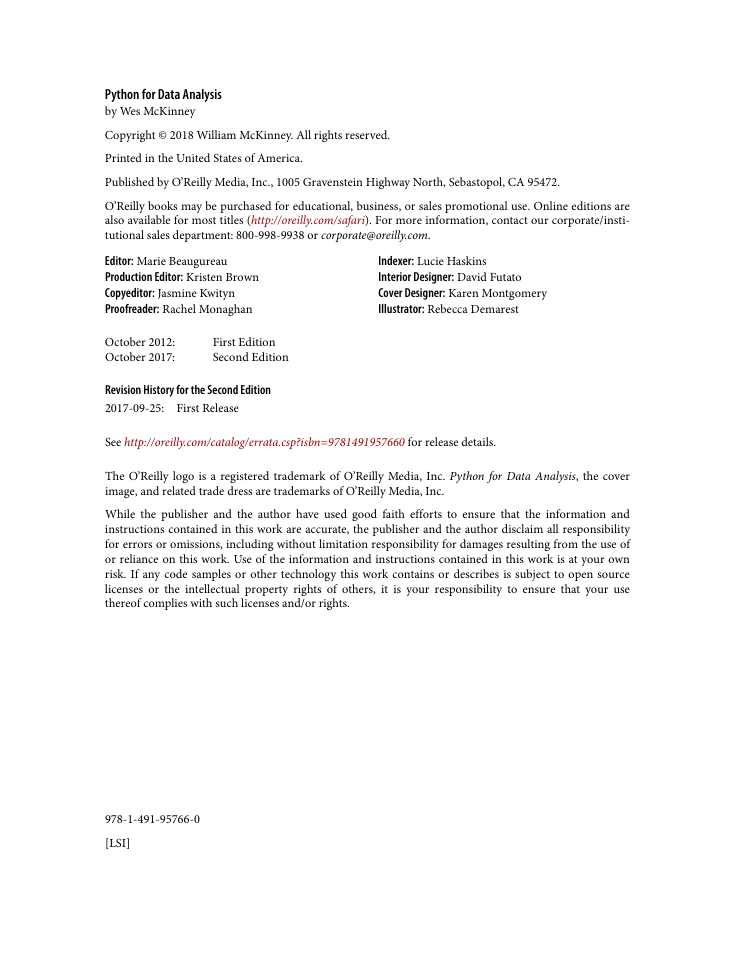
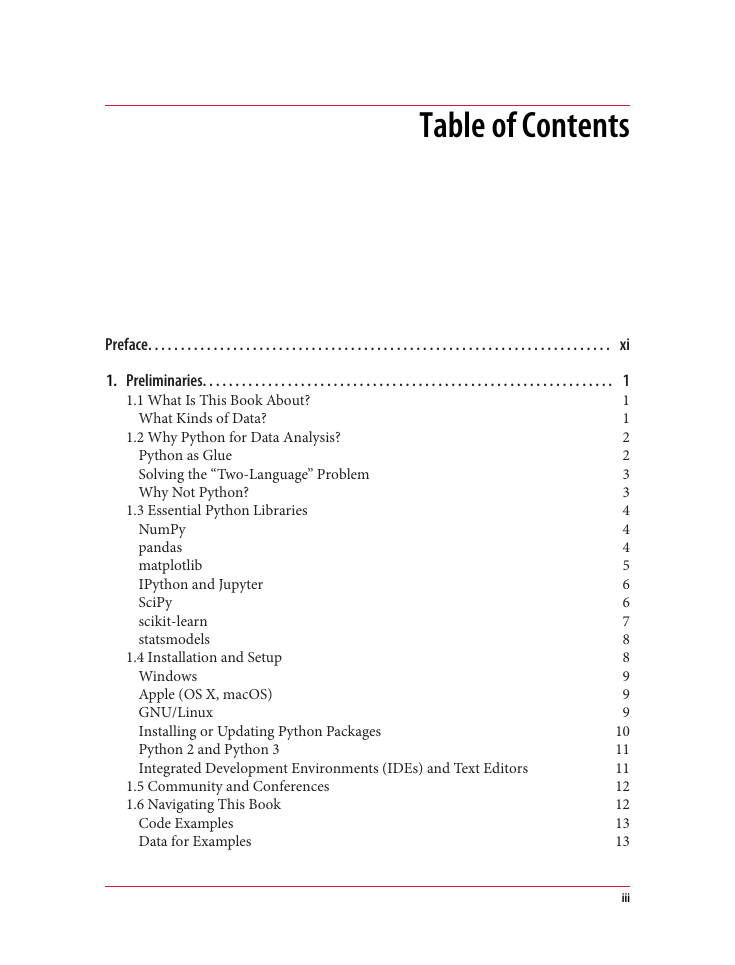
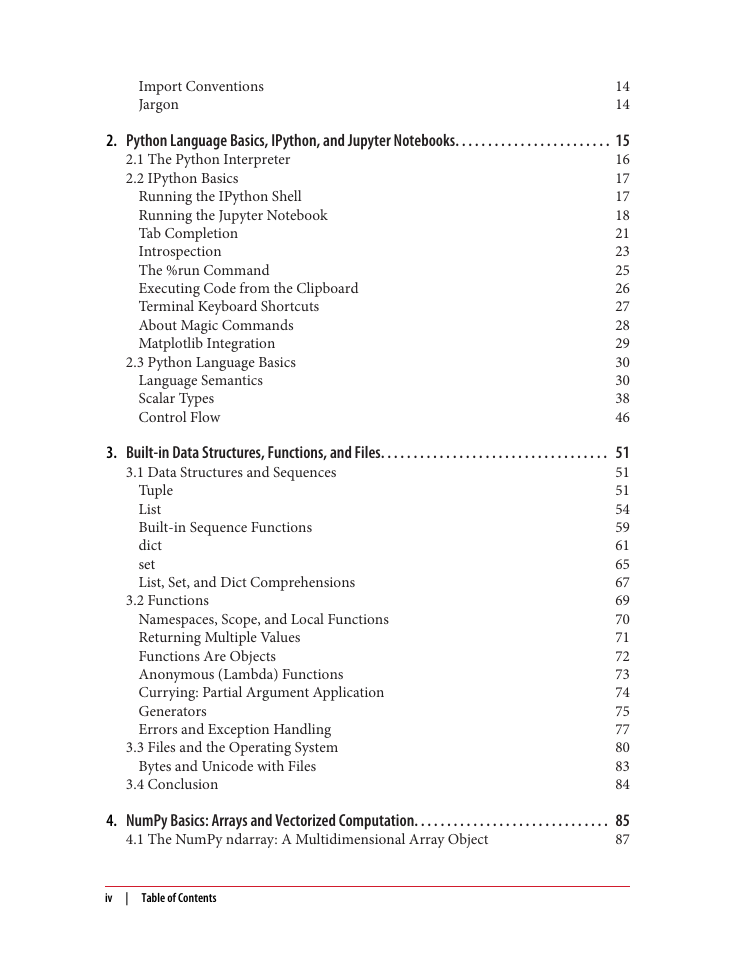
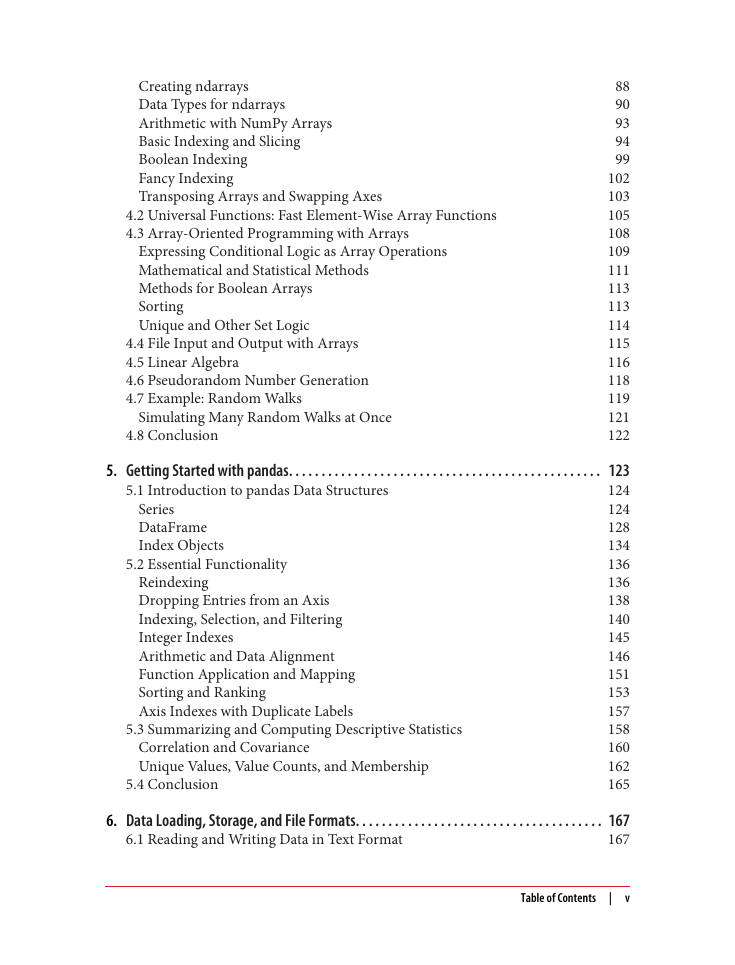









 2023年江西萍乡中考道德与法治真题及答案.doc
2023年江西萍乡中考道德与法治真题及答案.doc 2012年重庆南川中考生物真题及答案.doc
2012年重庆南川中考生物真题及答案.doc 2013年江西师范大学地理学综合及文艺理论基础考研真题.doc
2013年江西师范大学地理学综合及文艺理论基础考研真题.doc 2020年四川甘孜小升初语文真题及答案I卷.doc
2020年四川甘孜小升初语文真题及答案I卷.doc 2020年注册岩土工程师专业基础考试真题及答案.doc
2020年注册岩土工程师专业基础考试真题及答案.doc 2023-2024学年福建省厦门市九年级上学期数学月考试题及答案.doc
2023-2024学年福建省厦门市九年级上学期数学月考试题及答案.doc 2021-2022学年辽宁省沈阳市大东区九年级上学期语文期末试题及答案.doc
2021-2022学年辽宁省沈阳市大东区九年级上学期语文期末试题及答案.doc 2022-2023学年北京东城区初三第一学期物理期末试卷及答案.doc
2022-2023学年北京东城区初三第一学期物理期末试卷及答案.doc 2018上半年江西教师资格初中地理学科知识与教学能力真题及答案.doc
2018上半年江西教师资格初中地理学科知识与教学能力真题及答案.doc 2012年河北国家公务员申论考试真题及答案-省级.doc
2012年河北国家公务员申论考试真题及答案-省级.doc 2020-2021学年江苏省扬州市江都区邵樊片九年级上学期数学第一次质量检测试题及答案.doc
2020-2021学年江苏省扬州市江都区邵樊片九年级上学期数学第一次质量检测试题及答案.doc 2022下半年黑龙江教师资格证中学综合素质真题及答案.doc
2022下半年黑龙江教师资格证中学综合素质真题及答案.doc